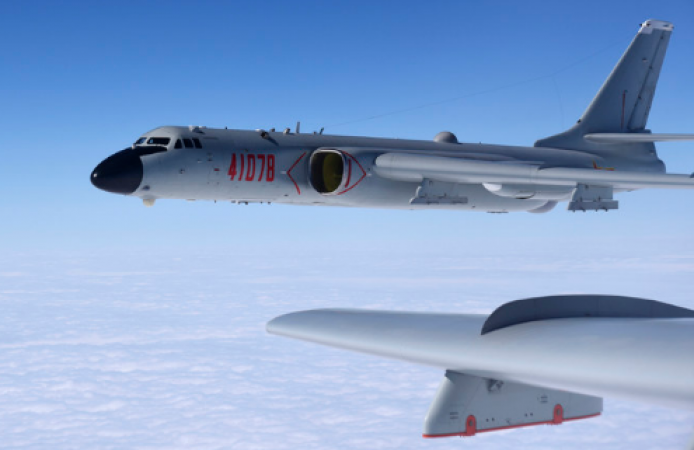
Beijing; China Flexes Muscles with Military Drills around Taiwan in 'Stern Warning' Amidst Vice President's US Visit"
Tensions escalate as China initiates military exercises encircling Taiwan, delivering what it terms a "stern warning" following its displeasure over Taiwan's Vice President William Lai's visit to the United States.
Lai, a prominent contender in Taiwan's impending presidential election, embarked on a journey that encompassed New York and Paraguay, a diplomatic ally of Taipei.
Also Read: India, WHO Launch Global Initiative on Digital Health at G20 Summit Today
His return voyage transpired through San Francisco. Regarded as a "troublemaker" by China, Lai's activities have spurred Beijing's vow to employ "resolute and forceful measures to safeguard national sovereignty."
China's People's Liberation Army's Eastern Theatre Command has launched a series of joint air and sea patrols and military exercises involving the navy and air force near Taiwan, as confirmed by military spokesperson Shi Yi and reported by the state media outlet Xinhua.
These drills serve the dual purpose of gauging the PLA's capability to assert dominance over air and sea spaces and engaging in combat scenarios under authentic conditions.
Additionally, the exercises function as a strong signal to those advocating "Taiwan independence" and their alleged collaboration with foreign entities, thereby cautioning against provocations.
Taiwan's status remains a point of contention, with China not excluding the use of force to annex the island. Notably, the intensified military activities followed President Tsai Ing-wen's meetings with influential US lawmakers during her US trip and a prior visit by former House Speaker Nancy Pelosi to Taiwan last year.
Also Read: World Humanitarian Day: Ancient Indian Philosophy and the Teachings of Humanity
Amidst this backdrop, Washington has encouraged restraint and characterized Lai's transit as routine. The situation continues to unravel, bearing implications for regional dynamics and the delicate balance of power in the Asia-Pacific region